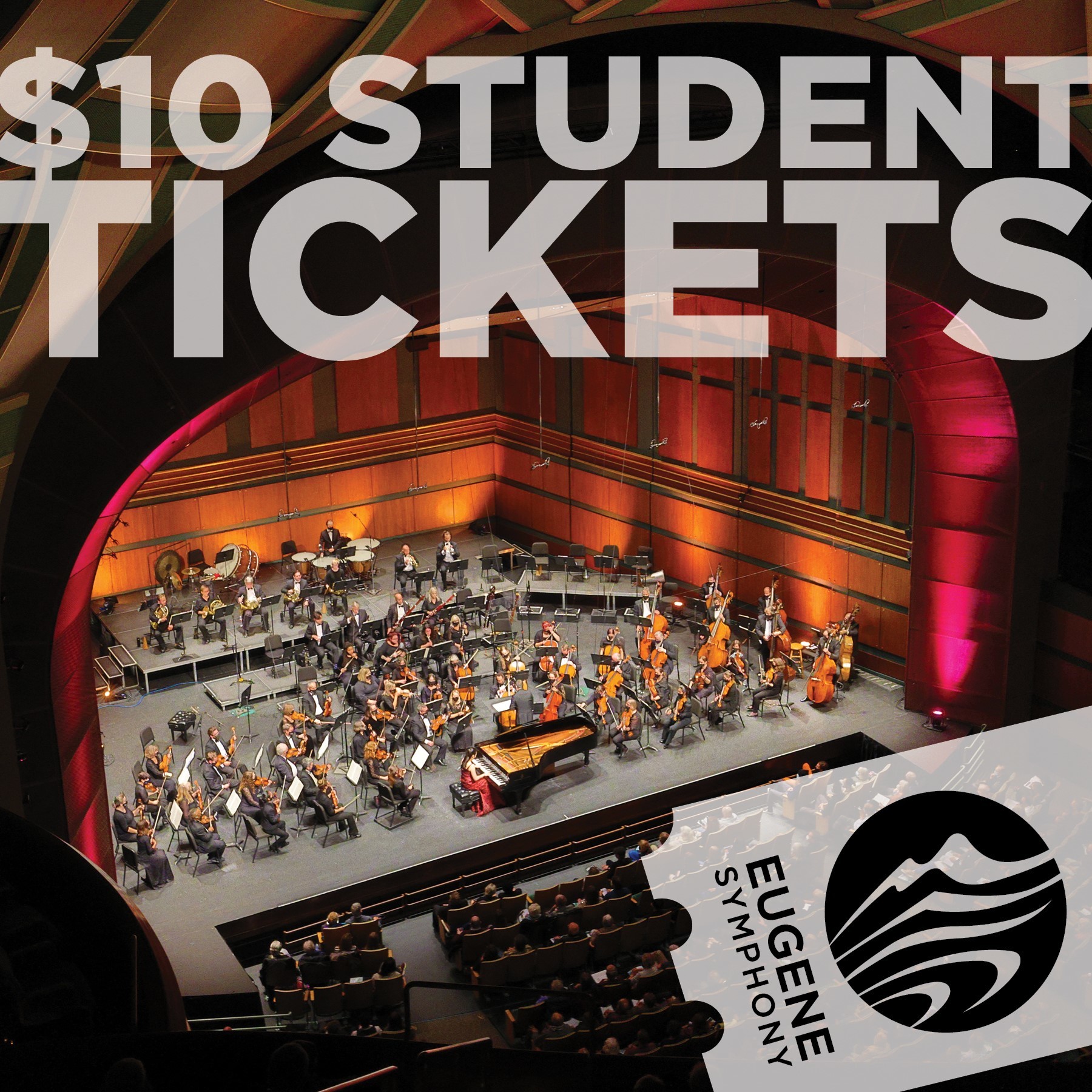Thu April 20 | 7:30 PM
Prokofiev’s
Romeo & Juliet
Pianist Pallavi Mahidhara returns to our stage, this time performing Camille Saint-Saens’ Concerto alongside stories of star-cross lovers and ill-fated heroes.
TICKETSApril 20, 2023 7:30 PM
Prokofiev’s
Romeo & Juliet
William Shakespeare’s tale of star-crossed lovers has inspired many musical settings, including operas, overtures, and ballets. Sergei Prokofiev’s interpretation brings out the hope of love and the agony of loss, taking us all on a moving emotional journey. Russian composer Lera Auerbach’s retelling of the myth of Icarus, whose audacity took him too close to the sun, is captivating and fresh. In between, Camille Saint-Saëns’s Concerto has the perfect balance of virtuosity and heart, played by Pallavi Mahidhara, whose performance of George Gershwin’s Rhapsody in Blue in 2019 brought audiences to their feet.
Check out these free events to enhance your concert-going experience:
- Monday, April 17, 5 pm: Symphony Happy Hour at the First National Taphouse, hosted by guest conductor Joseph Young
- Tuesday, April 18, 4 pm: Piano Master Class with guest pianist Pallavi Mahidhara
- Thursday, April 20 starting at 4 pm: Make it a date night! Marche has created a special one-night-only menu for Prokofiev's Romeo & Juliet. Learn more below about how to make a reservation for you and your honey.
- Thursday, April 20, 6:30 pm: Guild Pre-Concert Talk in the Studio at the Hult Center, hosted by Executive Director Scott Freck, with guest conductor Joseph Young and pianist Pallavi Mahidhara
LEARN MORE
- Listen to the below Spotify playlist, curated by Music Director & Conductor Francesco Lecce-Chong, for inspiration and insight into this classic love story.
- Watch the below video of Music Director & Conductor Francesco Lecce-Chong introducing the concert's exciting offerings.
- Get to know Pallavi Mahidhara through her podcast, The Conscious Artist: Mental Health Conversations with Pallavi Mahidhara.
- Read our First-Timers Guide to brush up on orchestra vocabulary and find out what to expect from a concert at the Hult Center.
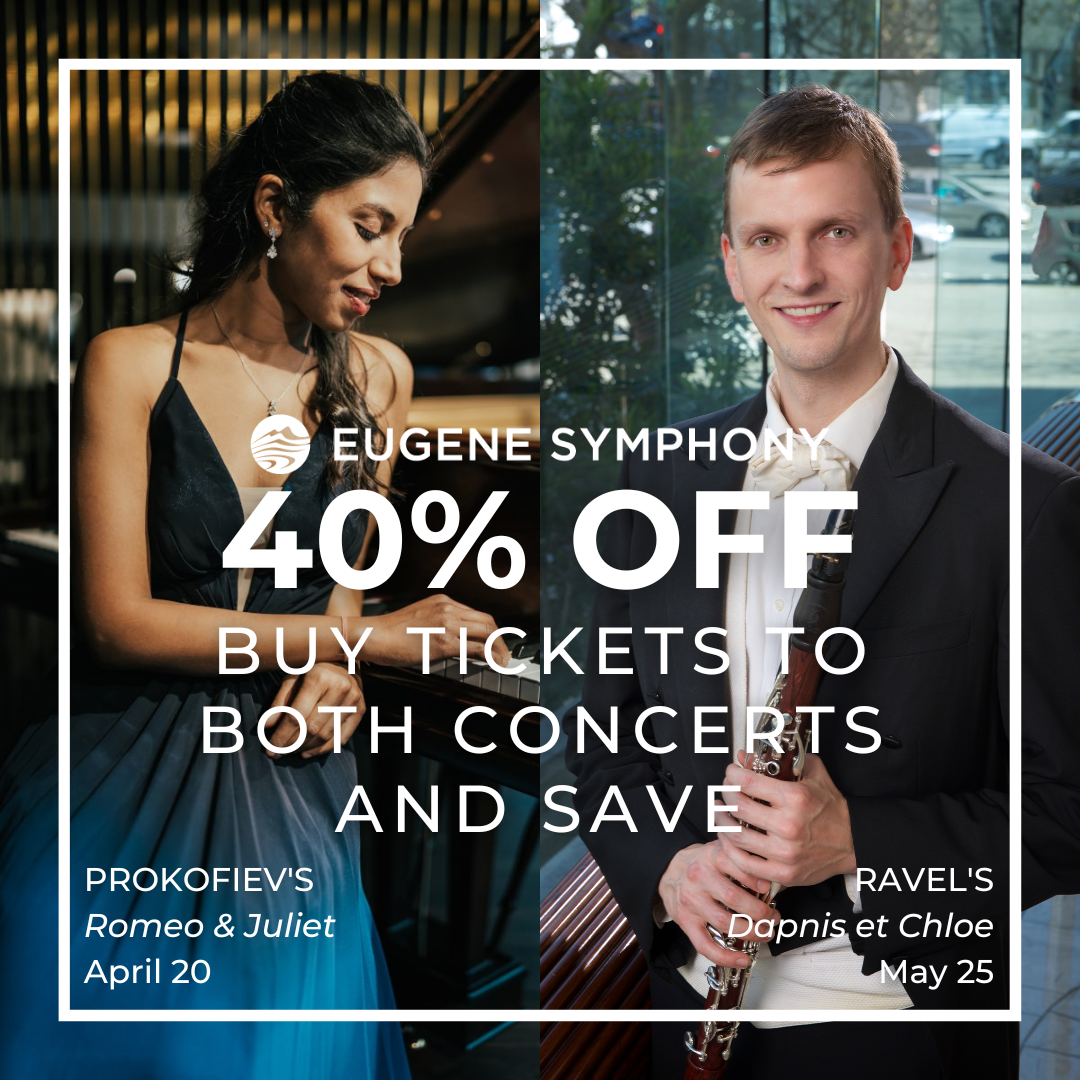
SPECIAL OFFER: BUY 2 AND SAVE
We have two Symphonic series concerts left of our 2022/23 season of storytelling: Prokofiev's Romeo & Juliet on April 20 with guest pianist Pallavi Mahidhara and guest conductor Joseph Young and Ravel's Daphnis et Chloe on May 25 with guest clarinetist and Eugene native Carey Bell, who is currently the principal clarinetist for the prestigious San Francisco Symphony.
We hope you'll join us and are offering a special 40% discount when you buy tickets to both concerts! Click here to take advantage of this special offer!
About Pallavi Mahidhara
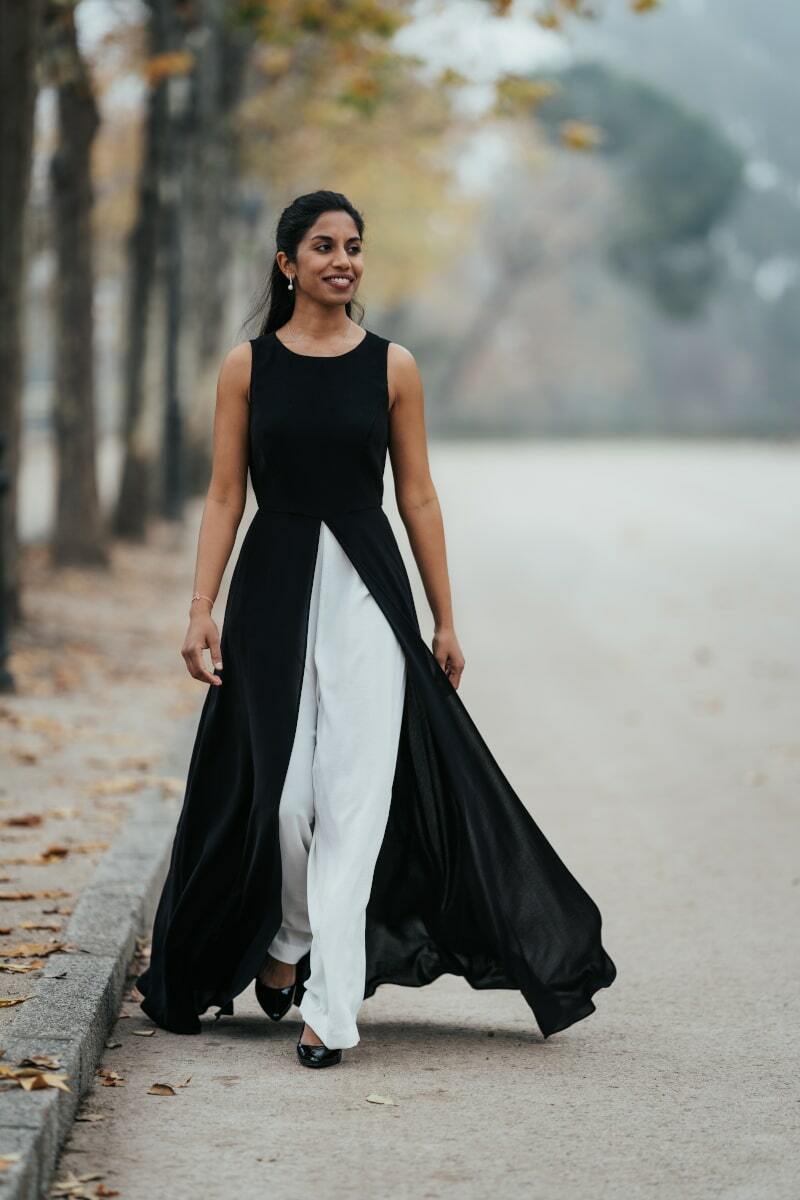
Indian-American pianist Pallavi Mahidhara made her orchestral debut at the age of 10, performing at the Ravinia Festival in Chicago. She is the Second Prize winner and Young Audience Award winner of the 69th Geneva International Piano Competition, and of the VI International Prokofiev Competition in Saint Petersburg, Russia. She has won the Steinway Förderpreis in Germany, the Astral Artists National Auditions in the US, and has received on multiple occasions, the “Sobresaliente” Award from the hands of Queen Sofía of Spain.
Praised for her unique artistry and charismatic stage presence, she has appeared in solo and orchestral concerts across five continents, performing at the Konzerthaus in Berlin, the Auditorio Nacional in Madrid, the Kennedy Center in Washington, DC, and the Grand Hall of the Dimitri Shostakovich Philharmonia in Saint Petersburg, Russia.
2021-2022 highlights include performances with renowned cellist, Gary Hoffman, Symphony Tacoma under the leadership of conductor Sarah Ioannides, and solo recitals in Germany and Spain. The Klavier-Festival Ruhr in Essen released a live performance recording of her recital from October 2021. She returns to the Gstaad Menuhin Festival in August 2022, performing a solo recital in Rougemont.
Pallavi was selected by Sir András Schiff for his concert series, Building Bridges, a platform to support and promote young pianists. Performances included solo recitals in Germany at the Konzerthaus in Berlin, the Beethoven Haus in Bonn, the Classeek Showroom in Aubonne, Switzerland, and the Centro Cultural de Belem in Lisbon, Portugal.
Pallavi has performed with Metamorphosen Berlin under Wolfgang Emanuel Schmidt at the Konzerthaus in Berlin, in Budapest at the MÜPA with the Danubia Orchestra Óbuda under Róbert Farkas, with the Eugene Symphony in Oregon under Teddy Abrams, and with the Orquesta de Camara de Comunidad Valenciana with Daniel Abad Casanova.
Pallavi has performed at important festivals such as Marlboro Music and Verbier Festival. She has given chamber music performances with renowned artists such as Diemut Poppen, Wolfram Christ, Arnold Steinhardt, Peter Wiley, and Michael Rusinek, István Várdai, Pablo Ferrández, Josef Spacek, and Theo Fouchennert. She has performed under the direction of Arjan Tien, Thomas Sanderling, Daniel Boico, and Pablo Gonzalez, amongst others.
Pallavi received her Bachelor’s Degree from the Curtis Institute of Music, and her Master’s Degree at the Hochschule für Musik Hanns Eisler. She studied for several years with Dimitri Bashkirov at the Escuela Superior de Música Reina Sofía. Aside from her private studio, Pallavi is the Artistic Advisor and a Piano Professor for Young Artists Program at the Reina Sofia School in Madrid, Spain, and is regularly invited to teach for Curtis’s Mentor Alumni Program. Pallavi is the executive producer, writer, and host of the “The Conscious Artist”, a new podcast designed to promote Mental Health Awareness for musicians, artists, and all human beings.
About Joseph Young
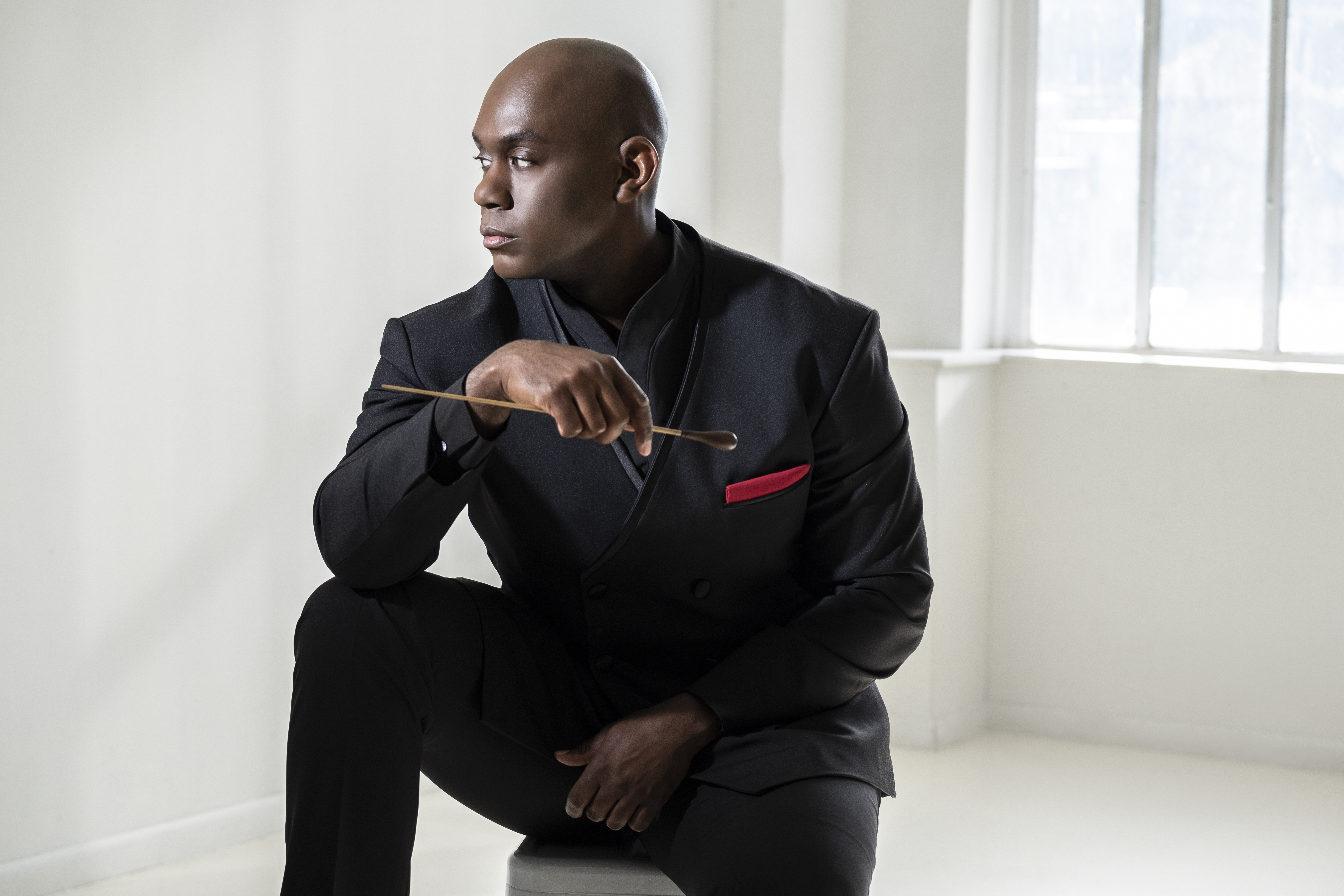
Joseph Young is one of the most gifted conductors of his generation. The 40 year-old American balances a vibrant guest conducting career with leadership roles as the Music Director of the Berkeley Symphony Orchestra, Artistic Director of Ensembles for the Peabody Conservatory, and Resident Conductor of the National Youth Orchestra–USA at Carnegie Hall.
Recognized for the “eloquence of his programming choices” (San Francisco Chronicle), Joseph marries his reverence for the Western canon with his commitment to amplifying voices, both historic and contemporary. In this capacity, he has presented works by Juan Pablo Contreras, Brian Raphael Nabors, Julia Perry, Florence Price, and Carlos Simon, alongside established greats including Adams, Bernstein, Brahms, Dvořák, and Prokofiev, to great acclaim.
His 2022–2023 season is marked by major debuts, beginning with the Los Angeles Philharmonic at the Hollywood Bowl and continuing with Washington National Opera and the National Symphony Orchestra, both at the John F. Kennedy Center for the Performing Arts. In July 2023, he makes his Carnegie Hall debut leading the National Youth Orchestra.
In the 2021–2022 season, Joseph made his San Francisco Symphony debut in an appearance called “stirring…robust and fluid” (San Francisco Chronicle); traveled to Johannesburg, South Africa, to inaugurate the newly formed Mzansi National Philharmonic Orchestra; and led the world premiere of William Menefield and Sheila Williams’ Fierce with the Cincinnati Opera. Other recent engagements include the Seattle Symphony, Rochester Philharmonic, Detroit Symphony, Phoenix Symphony, New World Symphony Orchestra, Spoleto Festival Orchestra, Orquestra Sinfónica do Porto Casa da Música (Portugal), and the Orquesta Sinfónica y Coro de RTVE (Spain), among others in the U.S. and Europe.
Earlier in his career, Joseph served as the Assistant Conductor of the Atlanta Symphony under Robert Spano, and Music Director of the Atlanta Symphony Youth Orchestra, where he was the driving force behind the ensemble’s artistic growth. He has served as Resident Conductor of the Phoenix Symphony and the League of American Orchestras Conducting Fellow with the Buffalo Philharmonic and Baltimore Symphony Orchestra.
Joseph began his steady ascent in the orchestral world while serving as an educator in South Carolina. Self-guided, self-funded study led him to a conducting workshop with Marin Alsop who, recognizing his raw talent, created the BSO–Peabody Conducting Fellowship to facilitate his artistic and professional growth. He has since been mentored by giants of the orchestra world, including Jorma Panula, Robert Spano, and Alsop, with whom he continues to maintain a close artistic partnership. Now a mentor and role model himself, Joseph helps to shape the future of classical music through his dynamic engagements with major symphony orchestras, his steadfast commitment to teaching in classrooms and concert halls, and his service on the board of New Music USA.
Joseph is a three-time recipient of a coveted Solti Foundation U.S. Career Assistance Award for young conductors (2008, 2014, 2015). In 2013, he was a semi-finalist in the Gustav Mahler International Conducting Competition (Bamberg, Germany) and in 2011, he was one of six conductors featured in the League of American Orchestras’ prestigious Bruno Walter National Conductor Preview.
He holds an Artist’s Diploma in conducting from the Peabody Conservatory, studying with Gustav Meier and Markand Thakar, as well as a bachelor’s degree in Music Education from the University of South Carolina. He grew up in Charleston, South Carolina, the eldest son of a banker and a Naval officer, and studied trumpet before picking up a baton.
About Lera Auerbach
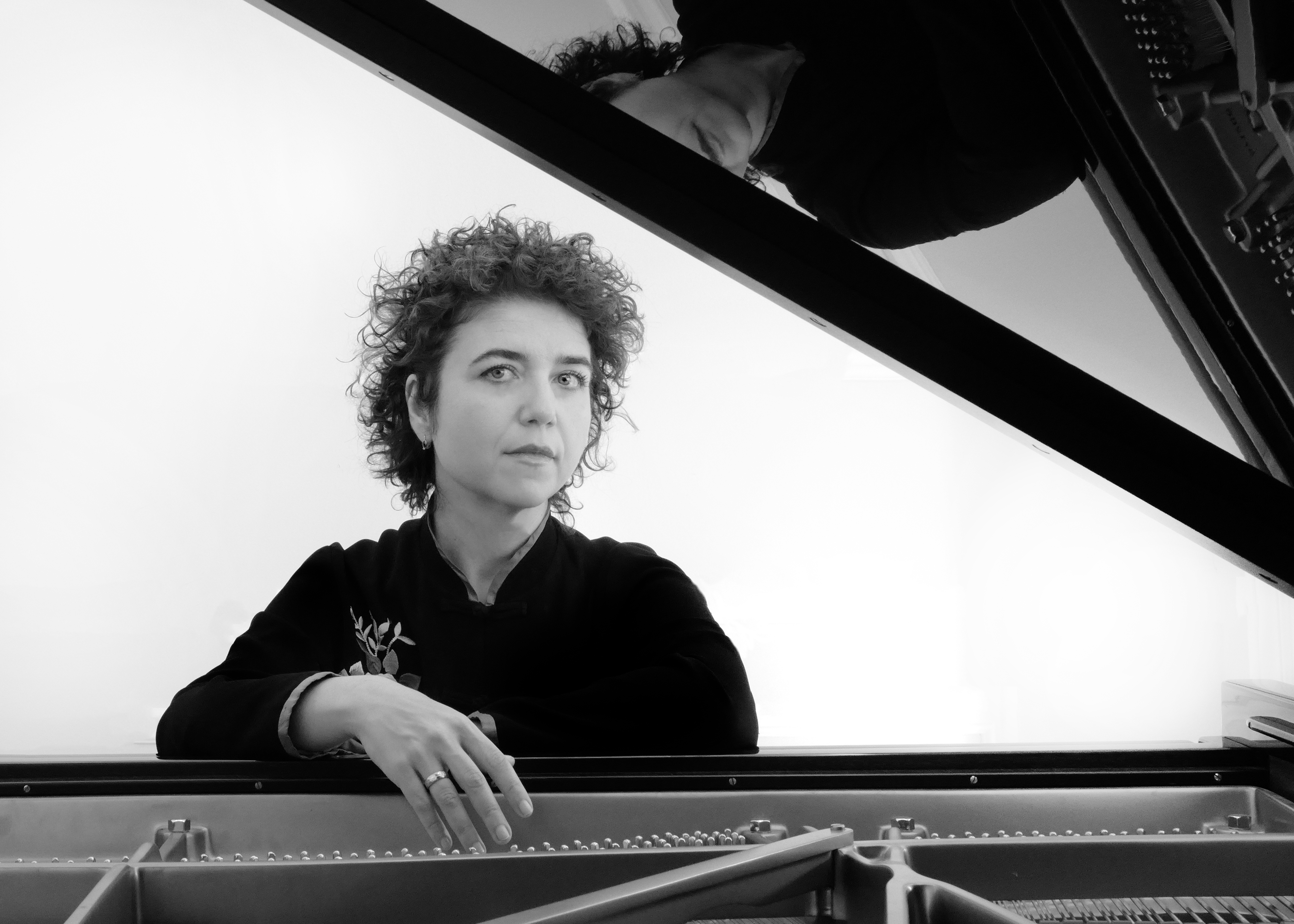
A renaissance artist for modern times, Lera Auerbach is a widely recognized conductor, pianist, and composer. She is also an award-winning poet and an exhibited visual artist. All of her work is interconnected as part of a cohesive and comprehensive artistic worldview.
Lera Auerbach has become one of today’s most sought-after and exciting creative voices. Her performances and music are featured in the world’s leading stages – from Vienna’s Musikverein and London’s Royal Albert Hall to New York’s Carnegie Hall and Washington D.C.’s Kennedy Center.
Auerbach’s exquisitely crafted, emotional, and boldly imaginative music reached to global audiences. Orchestral collaborations include the New York Philharmonic, Philadelphia Orchestra, National Symphony, Oslo Philharmonic, Munich’s Bayerisches Staatsorchester, Staatskapelle Dresden, and Vienna’s ORF Radio-Symphonieorchester, among many others. Auerbach’s works for orchestra are performed by the world’s leading conductors, including Christoph Eschenbach, Alan Gilbert, Vladimir Fedoseyev, Neeme Järvi, Vladimir Jurowski, Charles Dutoit, Andris Nelsons, Osmo Vänskä, Hannu Lintu, and Marin Alsop, to mention only a few.
Her large-scale theater works have been produced in major venues on every continent, including Vienna’s Theater an der Wien, New York’s Lincoln Center, the Hamburg State Opera, the War Memorial Opera House in San Francisco, the Royal Danish Theater, the Nuremberg State Theater, the Finnish National Theater, Moscow’s Stanislavsky, the National Centre for the Performing Arts in Beijing China and the NHK Hall in Tokyo.
Recent season highlights included WienModern’s 3.5-hour production of Demons & Angels with Auerbach as the conductor. Washington D.C.’s National Symphony premiered her 4th Symphony “Arctica” – a work commissioned by the National Geographic Society. Her 4th Violin Concerto NYx: Fractured Dreams” was commissioned and premiered by the New York Philharmonic with Alan Gilbert, and Leonidas Kavakos, and the Vienna Radio Symphony Orchestra premiered her symphonic poem Eve’s Lament with Marin Alsop. 2022 brought the world premiere of two Lera Auerbach symphonies. The Nuremberg State Philharmonic presented the world premiere of Symphony No.5 ‘Paradise Lost’ conducted by Joana Mallwitz, and her Symphony No.6 ‘Vessels of Light,’ a commission of Yad Vashem – The World Holocaust Remembrance Center, was unveiled in Lithuania as part of the city’s Cultural Capital of Europe celebrations.
Her music is championed and recorded by today’s most prominent classical performers, including violinists Gidon Kremer, Leonidas Kavakos, Daniel Hope, Hilary Hahn, Vadim Gluzman, Vadim Repin, Julian Rachlin; cellists Alisa Weilerstein, Gautier Capuçon, Alban Gerhardt, David Finckel; violists Kim Kashkashian, Nobuko Imai, and Lawrence Power, and many others.
Auerbach is equally prolific in literature and the visual arts. She incorporates these forms into her professional creative process, often simultaneously expressing ideas visually, in words, and through music. She has published three books of poetry in Russian, and her first English-language book, Excess of Being – in which she explores the rare form of aphorisms. Her next book, an illustrated work for children, A is for Oboe, published by Penguin Random House, won Audiofile Best Audiobook 2022. She is the recipient of the 2021 Marsh Hawk Press – Robert Creely Memorial Award for her English poetry manuscript “Morning Music.”
Auerbach has been drawing and painting all her life as part of her creative process. Her visual art is exhibited regularly, included in private collections, and represented by leading galleries.
Lera Auerbach holds multiple degrees from the Juilliard School in New York and the Hannover University of Music, Drama, and Media in Germany. Her teachers include Milton Babbitt, Rosalyn Tureck, Joseph Kalichstein, and Einar Steen-Nøkleberg. The World Economic Forum in Davos, Switzerland, selected her in 2007 as a Young Global Leader, and since 2014, she has served as a Cultural Leader. Boosey and Hawkes / Sikorski publish her music, and recordings are available on ECM, Deutsche Grammophon, Nonesuch, Alpha Classics, BIS, Cedille, and many other labels.
Program Notes for Prokofiev's Romeo & Juliet
Program notes written by Eugene Symphony Assistant Conductor Daniel Cho.
Eugene Symphony is joined by guest conductor Joseph Young, known for his dynamic and energetic interpretations, in an exploration of stories that have shaped Western culture:
- Lera Auerbach’s modern retelling of Icarus and the hubris of youth
- Pianist Pallavi Mahidhara joins the ensemble in French composer Camille Saint-Saëns’s Second Piano Concerto, composed in an astonishing 17 days
- Russian composer Sergei Prokofiev’s take on William Shakespeare’s tale of doomed young love, Romeo and Juliet
ICARUS
LERA AUERBACH (B.1973)
Duration: Approximately 12 minutes
The allegory of Daedalus and Icarus is one often used to demonstrate hubris, a personality trait of excessive pride or arrogance that is often the direct cause of one’s downfall. In the Greek myth, Daedalus, an inventor and architect, is imprisoned along with his son Icarus in a Labyrinth of his own making by Minos, the King of the island Crete.
In an effort to escape, Daedalus secretly builds two pairs of wings made of feathers and wax which he and his son would use to fly away and escape their prison. Before their departure, Daedalus provides a warning to Icarus: Do not fly too close to the sun, for the heat of the sun would melt the wax holding the feathers together. Initially, their plan is successful: They make their escape, leaving the island behind and soar over the waves of the sea. As their prison fades behind them and they experience their newfound freedom, Icarus ecstatically begins to climb higher and higher into the sky, despite desperate protestations from his father. As Daedalus warned, the heat from the sun melts the wax, causing Icarus’s wings to deteriorate and the boy plunges to his death in the ocean as his father looks on in horror.
Within the myth of Daedalus and Icarus, Icarus has traditionally been used as the example of arrogance to be avoided. However, with her piece Icarus, composer Lera Auerbach approaches the story from an alternate perspective, one that empathizes with the young boy and instead shines a spotlight on Daedalus:
“… What makes this myth so touching is Icarus’s impatience of the heart, his wish to reach the unreachable, the intensity of the ecstatic brevity of his flight and inevitability of his fall. If Icarus were to fly safely—there would be no myth. His tragic death is beautiful. It also poses a question—from Daedalus’s point of view—how can one distinguish success from failure? His greatest invention, the wings which allowed a man to fly, was also his greatest failure as they caused the death of his son. Daedalus was brilliant, his wings were perfect, but he was also a blind father who did not truly understand his child. If he did, he would realize that the road to freedom leads to its ultimate form—death, which Icarus, with the uncompromising daring of youth, achieves…”
LISTEN for the celesta, also called a bell-piano, which sounds like a softer, more subtle glockenspiel.
Icarus, composed in 2006, originally began as the final two movements of the composer’s first symphony. The work expertly utilizes the full breadth of the orchestra’s sonic capabilities, including the ethereal sounds of crystal glasses played by the percussion section. The work begins intensely, with pounding lower strings and blaring brass instruments, portending great doom. The soundscape devolves into the sparse texture of a flute, harp, and solo violin, but never loses its sense of anxiety and dread.
The second section of the work creates an eerie atmosphere and features the flute, oboe, and solo violin over an ominous drone played by the bass instruments of the orchestra. The work ends with the pure tones of crystal glasses fading away.
SCORED: For three flutes including alto flute, piccolo, two oboes, English horn, three clarinets including bass clarinet, three bassoons including contrabassoon, four horns, three trumpets, three trombones including bass trombone, tuba, timpani, percussion, two harps, piano, celesta, and strings.
HISTORY: This is the first Eugene Symphony performance.
PIANO CONCERTO NO. 2 IN G MINOR, OP. 22
CAMILLE SAINT-SAËNS (1835–1921)
DURATION: Approximately 24 minutes
Legendary conductor, composer, pianist, and pedagogue Leonard Bernstein once said, “To achieve great things, two things are needed: a plan and not quite enough time.” Approximately a century before Bernstein’s lifetime, French composer and pianist Camille Saint-Saëns presaged these words with the composition of his Second Piano Concerto in 1868.
Known as one of the most prolific and innovative composers of his time, Saint-Saëns was approached by legendary Russian pianist Anton Rubenstein, who was in Paris performing a series of concerts and expressed a wish to conduct a program with Saint-Saëns performing as a soloist. The date for such a performance would only be possible in three weeks’ time, for which Saint-Saëns daringly suggested he could compose a brand-new concerto—he completed the work in an astonishing 17 days. The premiere took place as scheduled, though it received mixed reactions because the composer did not factor in the time he would need to practice and execute the work to his full technical capabilities. Since then, however, the Second Piano Concerto has become Saint-Saëns’s most popular work for piano and orchestra and is one of the most often-performed works in his oeuvre.
Unlike the majority of other works of the same genre, the first movement, titled Andante sostenuto, begins not with the orchestra, but with the piano soloist in an immediate display of virtuosity. The pianist is suddenly interrupted by the orchestra’s first entrance, providing a short interlude before the soloist introduces the first theme of the movement. The ensemble and the pianist begin to engage in dramatic conversation, before the tension dissipates in the form of a serene second theme. The first and second theme are developed and varied, until the movement concludes.
The second movement, Allegro scherzando, begins with a rhythmic introduction from the timpani. The soloist enters in a playful and scampering manner, one that is mirrored by the woodwinds and strings. The majority of the movement is played softly, but never loses its sense of mischief and energy, evoking the character of scampering mice. Soon, the orchestra introduces a frolicking theme, accompanied by a swinging rhythmic figure from the piano soloist. The movement ends quietly.
LISTEN for soloist Pallavi Mahidhara’s virtuosity as she navigates the breakneck speed of the work’s final movement.
The third and final movement, titled Presto, puts the soloist’s virtuosic abilities to the test and was undoubtedly the movement that gave Saint-Saëns the most trouble during the work’s premiere. The work is written in the style of a tarantella, a popular Italian dance characterized by light, quick steps and a flirtatious demeanor between dancing partners. Throughout the movement, we hear a rolling, repeated figure that serves as the basis for the movement’s thematic material. The soundscape of the movement thins until only the piano continues in the fiery dance, hinting at a quiet conclusion reminiscent of the ending of the second movement. The orchestra, unwilling to be left out, interrupts, bringing the work to a pounding, dramatic conclusion.
SCORED: In addition to the solo piano, scored for two flutes, two oboes, two clarinets, two bassoons, two horns, two trumpets, timpani, percussion, and strings.
HISTORY: First performed in January 1981 under the direction of William McGlaughlin and with Mark Westcott as soloist.
SUITE FROM ROMEO & JULIET
SERGEI PROKOFIEV (1891-1953)
DURATION: Approximately 42 minutes
It is difficult to name a work of art that has inspired more subsequent generations of artists to create their own rendition than Shakespeare’s play of two star-crossed lovers from warring families. Music may be the perfect medium to convey not only the narrative but also the turbulent emotions of the characters; Hector Berlioz and Pyotr Ilyich Tchaikovsky, as well as Leonard Bernstein’s modern retelling in West Side Story, are just a few who have interpreted the sweeping, romantic, and tragic tale. All of these works stand out amongst these composers’ bodies of work as pieces of particular import, a clear indication of the profound effect Romeo and Juliet can have upon those who immerse themselves in its drama.
Russian composer Sergei Prokofiev’s take on the universal story is often cited as the most sonically descriptive and engaging of these many interpretations. Prokofiev’s compositional style is perfectly suited to the subject matter: his use of discordant notes that create clashing, disturbing sounds and militaristic rhythmic patterns embodies the tribalism and hate between the Montagues and Capulets; his playful use of strings and woodwinds captures the soul of the two young paramours who are oblivious to the consequences of their actions. His ability to create themes of extreme lyricism and romantic lushness personifies the intense infatuation and draw the doomed lovers feel towards one another.
The ballet was born as a joint venture between the composer and the director Sergei Radlov in 1935, with Radlov creating the scenes of the ballet and passing them to Prokofiev to set to music. The composer spent a good portion of the year in Oka River, a Russian resort town, where he dedicated his time to the composition. From the provincial town, Prokofiev wrote to a friend, “I am enjoying this peace and quiet. I swim in the Oka, play tennis and chess, go for walks in the forests with our ballerinas, do some reading, and work for about five hours a day… I am not resting so much as writing Romeo.”
The ballet begins with the most famous music from the work, “Montagues and Capulets,” a scene set on a street in Verona, where the two spiteful families engage in a physical altercation. Dissonant chords are built in the brass and suddenly explode in a full display of orchestral power. Suddenly, the terrifying fury is ripped away to reveal a soft bed of strings with mutes on, a brilliant use of differing timbres in the orchestra. Soon, a military march begins, laid down by brass and percussion, with violins climbing from the depths of their range to their heights.
Highlights from the ballet include “The Young Juliet,” our introduction to the young girl, full of mischief and an unwillingness to do as she is told. Violins scamper virtuosically, as woodwinds accentuate their lines with quick pops. A second section portrays Juliet’s sweet demeanor in the form of a gorgeous flute solo, accompanied by other woodwinds and a solo cello.
In “Masks,” Romeo and his friends make their entrance to the masked ball, where he will encounter his beloved for the first time and set our tragedy into motion.
In the famous “Romeo and Juliet” (also called the “Balcony Scene”), we hear a harp laying a pulsing, rhythmic figure over a longing theme in the violins—discordant notes in the basses foreshadow the ill-fated conclusion.
“Death of Tybalt” portrays the fierce duel between Romeo and Juliet’s cousin, Tybalt, with flashing violin lines and jabs in the brass and woodwinds. Romeo triumphs and as Tybalt lays dying, 15 pounding drum strokes signify his final breaths, followed by a mournful, horrified dirge rising from the horns and cellos.
“Dance of the Maids from the Antilles” depicts Juliet’s maids from the Caribbean islands of Antilles, with violins and clarinet singing an ethereal duet, with a metallic percussion instrument being struck with brushes.
In “Romeo at Juliet’s Grave,” Prokofiev captures the young lover’s anguish at Juliet’s death, unaware that she is only in a death-like trance at the hands of a potion. The brass blare as Romeo plunges a dagger into his own heart, a tragedy of the needless action embodied by dissonant chords and the piercing tones of muted trombones and horns.
The ballet ends with “The Death of Juliet,” the culmination of the entire story. Prokofiev brilliantly captures the needlessness of the events, and the devastating loss of two young lives and their love, caused by old grudges and the inability of two families to let the past go.
SCORED: This compilation from the three suites extracted from the complete ballet is scored for two flutes, piccolo, two oboes, English horn, three clarinets including bass clarinet, three bassoons including contrabassoon, four horns, three trumpets, cornet, three trombones including bass trombone, tuba, timpani, percussion, piano, celesta, and strings.
HISTORY: A suite from the ballet was first performed in February 1991 under the direction of Marin Alsop, and a suite from the ballet, along with actors from Oregon Shakespeare Festival, was last performed in November 2013 under the direction of Danail Rachev.
Make it a Date Night!
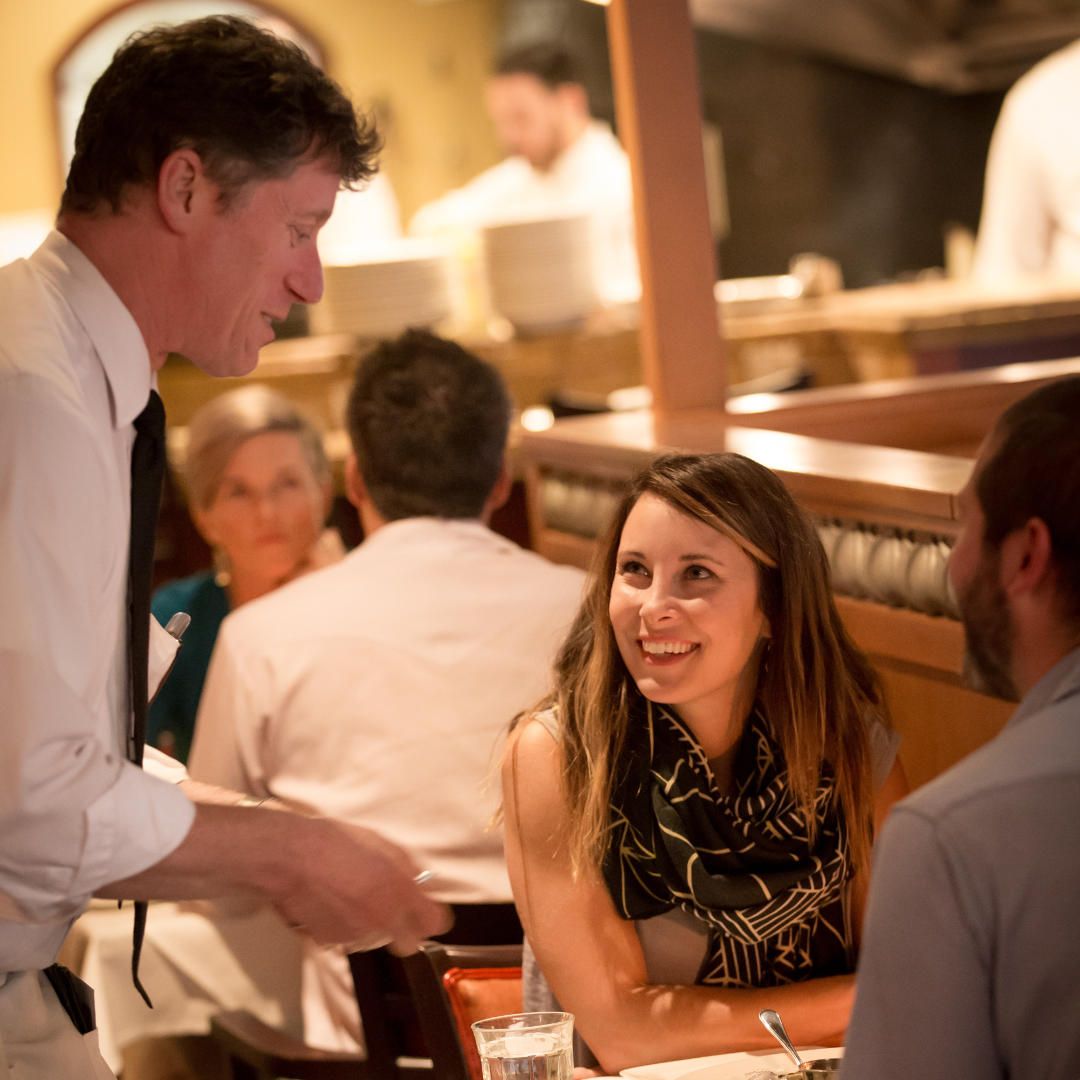
Marche has created a romantic one-night-only menu to celebrate Prokofiev's Romeo & Juliet for you to enjoy before the concert. Menu to be fully announced soon, but reservations are strongly recommended for this special evening. Make your reservation here. We hope to see you there!
About Marche:
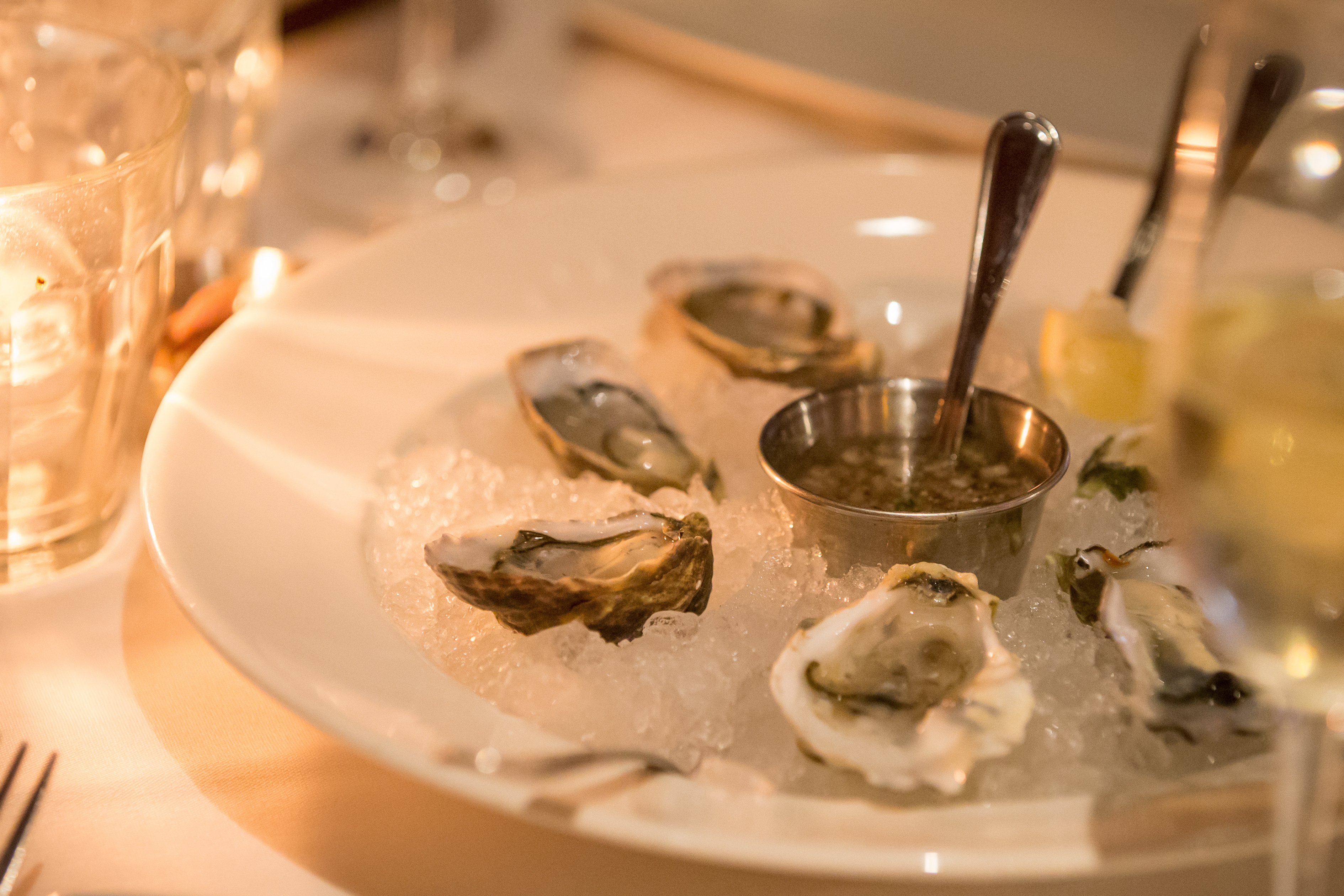
"We take our name from the French word for market — a word that describes not only our location in Eugene, Oregon’s bustling 5th Street Public Market, but also our philosophy. The menu is based on the foods you would find at the farmers market — fresh, seasonal, and local. We are inspired by French technique and committed to using only those ingredients that are at their best, so our menu evolves as we move through the seasons."
Enter the Eugene Symphony Lottery
Are you feeling lucky? Enter the Eugene Symphony lottery for the chance to win two tickets to an upcoming concert! Fill out this form, including contact information and choose from a variety of our symphonic concerts that you would like to attend. If you are a winner, you will be contacted one week before the concert to collect your winnings.
Health & Safety
The health and safety of Eugene Symphony audience members, musicians, and staff members has been and will always be our top priority. We strongly welcome and encourage patrons who wish to continue wearing masks while attending performances to do so. We want all of our attendees to feel comfortable and accepted in your choice. You take care of you, we'll take care of the music and ensuring that your experience attending a Eugene Symphony concert remains exceptional.
For the most up to date health and safety protocols for our concerts, visit our Eugene Symphony Safety page.
LOCATION: Hult Center for the Performing Arts



